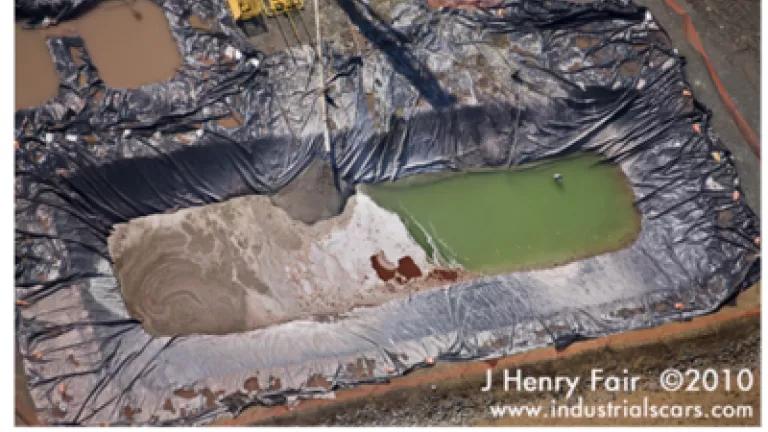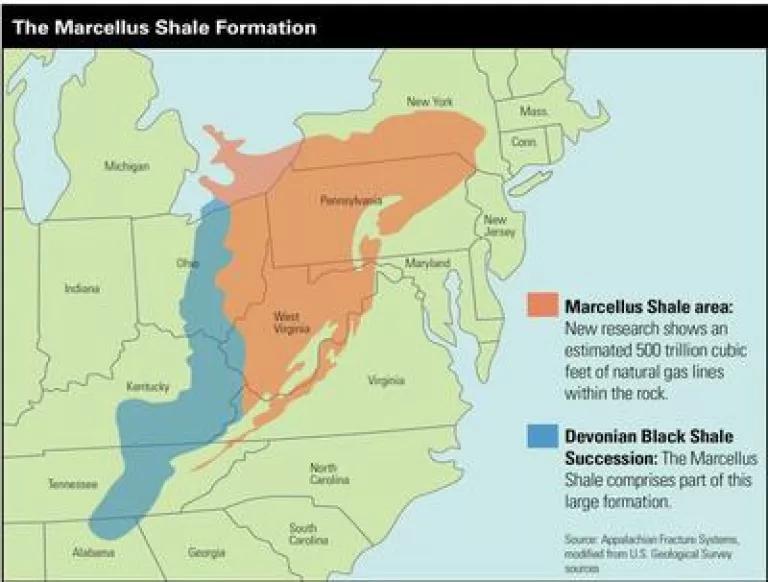
The New York Times just published the third part of Ian Urbina's powerful investigative series on the dangers associated with the controversial natural gas drilling technique known as fracking. Taken together, the three articles paint a devastating picture of current gas drilling practices in many parts of the country and lay out numerous problems that must be solved before any new fracking activities should be allowed in New York State.
In part one of the series, the Times highlighted the lax regulatory framework governing fracking and raised troubling questions about disposal practices for the huge volume of potentially radioactive wastewaters that are left at the end of the drilling process. In part two of the series, the Times documented how industry promises to recycle and properly treat hazardous waste from gas drilling operations have frequently and brazenly gone unfulfilled.
In the latest installment, the Times describes the political pressures over the years on the U.S. Environmental Protection Agency from industry and lawmakers from gas-producing states, in an ongoing effort to cripple federal oversight. Such pressure has been part of the industry’s long-running campaign to downplay the risks from poorly regulated fracking and to protect the gaping exemptions that big oil and gas corporations have secured from the nation’s most basic laws to protect our health and environment.
For example, the Times reports that EPA studied fracking when Congress was considering whether the process should be fully regulated under the Safe Drinking Water Act in 2004:
“An early draft of the study discussed potentially dangerous levels of contamination in hydrofracking fluids and mentioned ‘possible evidence’ of contamination of an aquifer. The final version of the report excluded these points, concluding instead that hydrofracking ‘poses little or no threat to drinking water.’”
“Shortly after the study was released,” the Times dispatch continues, an EPA whistleblower said the agency’s final report “had been strongly influenced by industry and political pressure.”
“MYSTERY LIQUIDS”: Wastewaters from hydrofracked gas wells – like these from Pennsylvania – are contaminated with varying levels of hazardous substances but have frequently been disposed of improperly, according to the New York Times investigation.
Thanks in part to the good work of New York Congressman Maurice Hinchey, EPA is now embarking on a new, congressionally mandated national study of fracking.
Since assuming her post, President Obama’s EPA Administrator, Lisa Jackson, has demonstrated that she is a strong guardian of public health and a true friend of our nation’s air and water. But, as the Times article makes clear, there is every reason to believe that pressure on EPA from the gas and oil industry (and from their friends in Congress) is going to continue.
What does all this mean for New York, where the Cuomo Administration is now mulling how best to deal with the gas industry clamor for widespread fracking in the state’s portion of the Marcellus Shale formation?

The Marcellus Shale – a geological formation that stretches from Virginia into southern New York State – has attracted new interest in industrial gas drilling, despite a boatload of unresolved regulatory problems. At least 50,000 new Marcellus wells are expected to be drilled in neighboring Pennsylvania over the next two decades, according to the Times report."
The stakes are high for all New Yorkers who want safe, clean drinking water. Perhaps nobody should be more worried that residents of New York City, Westchester County and Syracuse. The water supplies in these localities are currently unfiltered.
But declines in water quality – which could well result if widespread gas drilling flies ahead – could trigger state or federal orders to construct massive filtration facilities. And the construction of multi-billion dollar filtration facilities would precipitate soaring rate increases for millions of New York water consumers.
My colleague Kate Sinding has been spearheading NRDC’s campaign to protect all New York State waters from the dangers of ill-considered drilling schemes. She will certainly have more to say on this issue in the weeks to come.
But here are three lessons for New York State officials, which flow directly from the Times’ well-researched three-part investigation:
"Lesson #1 – Take your time to get this right, New York State.
There is nothing to be gained and much to be lost by racing ahead and implementing a flawed gas drilling program. Just look at Pennsylvania, where they followed the full-speed-ahead approach and, as the Times series documents, many residents there have had their lives upended. They’ve had their water contaminated, their property values devastated, and their communities destroyed.
New York officials are currently observing an unofficial moratorium until June on new fracking activities. But it will take months longer to answer all the questions and put in place ironclad rules and safeguards to ensure that all New Yorkers are protected from the risks of widespread drilling.
This time schedule was set, arbitrarily, by the Paterson administration – and the new administration under Governor Cuomo shouldn’t feel obligated to meet this deadline at the risk of rushing through the process. It should take all the time it needs to review and analyze the facts and to adopt the most comprehensive restrictions, regulations and safeguards in the country before allowing any fracking to proceed.
Lesson #2 -- Be sure your environmental review of fracking’s impacts is beyond reproach and addresses all of the consequences Pennsylvania and states around the country have suffered.
Even before the Times' investigation into fracking, the issue has been a hot one here in New York. New Yorkers have made this their number one environmental health concern, and for good reason. History suggests that short-circuiting the environmental review process not only leads to grave consequneces – but public cynicism and years of litigation.
The State Department of Environment Conservation should promise New Yorkers that it will do everything in its power to make sure New York doesn’t see a repeat of the gas drilling nightmare the rest of the country has experienced – dead livestock, houses that will never sell again, and poisoned drinking water. That means conducting the strongest possible environmental review, holding new public hearings around the state so the people impacted can weigh-in, and examining cummulative impacts of gas drilling before proceeding. And it means issuing formal, new regulations before issuing any new permits.
Lesson #3 -- Press for closing of gas and oil industry loopholes, so they must comply to the same basic federal environmental and health laws as everyone else.
As the Times reports, the oil and gas drilling industry is exempt from portions of more than a half dozen bedrock environmental laws, including the Safe Drinking Water Act, Clean Water Act and Clean Air Act. Water resources and public health will remain at risk in New York (and elsewhere) from widespread fracking until that changes.
The State Department of Environmental Conservation should join the growing chorus of government agencies and elected officials nationwide who are calling upon Congress to eliminate the sweatheart exemptions this industry enjoys from compliance with protective national environmental laws.
As the Times' series vividly portrays, current fracking operations pose myriad threats to water resources, environmental health and the quality of life in communities around the country. New York has a chance to stop the cycle, to say “NOT HERE,” and to set a model the rest of the nation can follow. The problems exposed by the Times' fearless reporting can and must be resolved before any new gas drilling operations move forward in New York.

